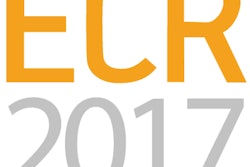
More radiologists are demanding higher-resolution display monitors and larger screen sizes, enabling them to read images more efficiently. Greater use of fusion imaging is boosting demand for larger screens, according to market analyst Kelly Patrick.
It is also the case that while 2 MP may have been the standard in diagnostic imaging, the mature markets of Western Europe have transitioned to the use of displays with higher resolutions. Digitalization of data is further driving demand for larger screens that enable increasing amounts of information to be displayed on one display.
More radiologists also are demanding larger screen sizes, enabling them to read images more efficiently. Increasing use of fusion imaging is boosting demand for larger screens. About 3% of radiology displays sold in the Europe, Middle East and Africa (EMEA) region had a screen size larger than 27" in 2014. By 2019, this proportion is set to increase to 6%, highlighting the growth for larger screens in the radiology market. Technological advancements such as 4K resolution displays are contributing to the trend to larger displays, offering improved clarity of images.
 Radiology displays split by screen size. Source: IHS.
Radiology displays split by screen size. Source: IHS.There are a growing number of regulations to support the correct use of diagnostic displays globally, ensuring DICOM compatibility of images. As a consequence, the attitude toward heightened image quality and quality of control is increasing. The use of clinical guidelines is driving demand for quality control software. As a result, display vendors are launching specific products to enable the increase in quality control checks to ensure quality assurance.
In July 2014, the DIN 6868-57 standard became law in Germany, resulting in mandatory compliance in German medical facilities. The DIN standard describes the acceptance test procedure for image display devices. This procedure contains the test of relevant parameters and tools to be used to determine acceptance testing of image quality. Both the manufacturer and user/expert should perform such an acceptance test upon installation or after modifications that could influence image quality.
With increasing regulations in the diagnostic market, users of clinical-review displays are showing increased demand for software calibration to improve the quality of images reviewed. The focus to improve the cost-efficiency of radiology departments is intensifying.
The big picture
As the imaging industry shifts toward preventative care, the use of healthcare information technology to aid diagnoses and to improve workflow is increasing, and there has been a clear shift from analog to digital images. Over the past 10 years, the proportion of analog x-ray systems sold to the general radiography market has fallen by 19%, according to IHS estimates. Flat panel detectors and mobile x-ray systems have subsequently gained market share. In other imaging modalities, there is a strong trend to combining images across MR, CT, and ultrasound using fusion imaging, and minimally invasive procedures are increasingly popular.
The growing volumes of digital images and data have caused a revolution in how devices utilize and store information, and data are being stored electronically in the electronic medical record. PACS and RIS have become increasingly important, not only for the storage of images, but also for integration with other systems such as advanced visualization software.
Kelly Patrick is an associate director at IHS for the Medical Technology research team. IHS Technology provides market research and consultancy services to the medical device industry.
The comments and observations expressed herein do not necessarily reflect the opinions of AuntMinnieEurope.com, nor should they be construed as an endorsement or admonishment of any particular vendor, analyst, industry consultant, or consulting group.



















